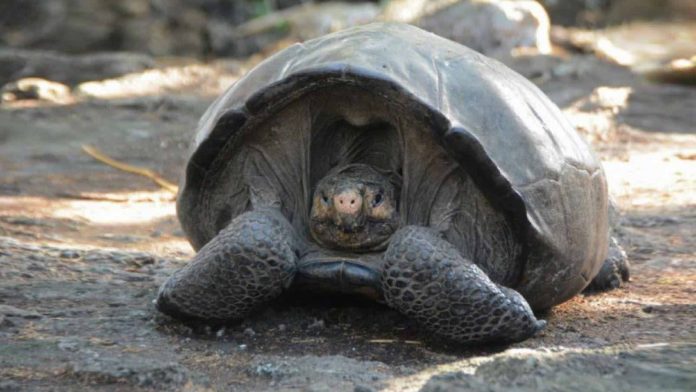For more than 100 years, a species of giant tortoise on the Galapagos Islands was believed to be extinct. That is, until now.
The Galapagos Islands, also known as Galapagos National Park, is home to many species of animals, including finches, lava lizards, red-footed boobies, sea lions, penguins, and formerly, many species of giant tortoise. Due to exploitation for food and resources, at least three species of the giant tortoise were left extinct, and many more endangered. There are 14 giant tortoise species native to the Galapagos Islands, according to CNN.
But Ecuador’s Ministry of the Environment said in a statement on Wednesday that a female tortoise, or Chelonoidis phantasticus, was discovered on Fernandina Island, according to USA Today. The tortoise is estimated to be over 100 years old.
This particular species of tortoise is unique to Fernandina Island, therefore, scientists will be conducting genetic tests to confirm that the rediscovered tortoise belongs to this specific species, CNN reported. She will be taken to a breeding center on the island of Santa Cruz for testing.
Perhaps more exciting is that experts believe there could be more of the species on Fernandina.
“This encourages us to strengthen our search plans to find other (tortoises), which will allow us to start a breeding program in captivity to recover this species,” said Danny Rueda, director of the Galapagos National Park, to CNN.
According to USA Today, the last official sighting of the Fernandina tortoise was in 1906. But since then, there have been inconclusive findings, like animal droppings and footprints, that indicated the species may have survived extinction. Officially, the Fernandina tortoise is listed as “Critically Endangered (Possibly Extinct)” under the IUCN Red List of Threatened Species, USA Today reported.
At the moment, there are only two groups of giant tortoises in the world, including ones on the Galapagos Islands and ones on Aldabra Atoll in the Indian Ocean, the Galapagos Conservancy told USA Today.
And since there are so many rare species of animals and plants on the islands, it’s a very special place opportunity to travel to the Galapagos to see them for yourself.
To visit, you can book a flight to Quito or Guayaquil in mainland Ecuador, then grab a connecting flight to the Galapagos. Or, you can opt for a cruise that takes you around the islands. However, it’s important to consider the time of year you’re planning to travel, since January through May can be extremely hot and wet.








